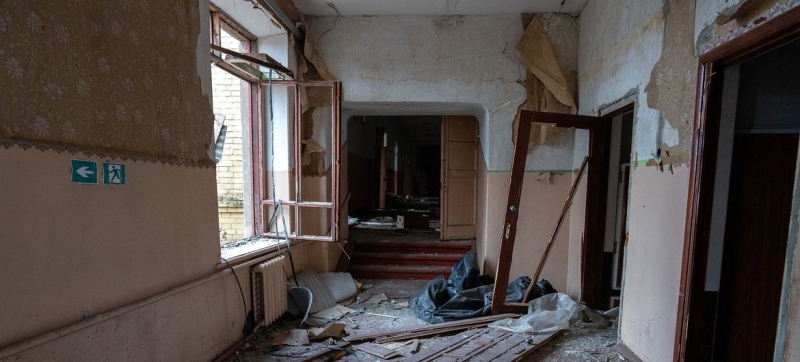
At least 2,064 civilians have been killed in military action in Ukraine in 2024. Zaporizhia attack: 13 killed, 110 wounded Peace and security
The attack on the city of Zaporizhia on January 8 was the deadliest for Ukrainian civilians in the past two years. The UN Human Rights Monitoring Mission in Ukraine said it once again underscored the dangers of using aerial bombs in densely populated areas.
Deadly Attack
During the attack, two air-to-air bombs hit an industrial facility, killing 13 people and injuring 110. It is the largest death toll recorded since a residential building in Dnipro was hit on January 14, 2023, and the deadliest attack since a supermarket in Kostyantynivka was attacked on August 9, 2024.
The Mission visited the scene, documented the extent of the destruction, and spoke to victims and witnesses. They recorded damage both inside and outside the plant, including buildings, transport, and roads. The attack occurred during the day, when workers were finishing their shift. Many of the victims, including passersby, were on the street or in public transport near the plant.
The UN Humanitarian Coordinator in Ukraine, Matthias Schmale, called the incident “yet another unacceptable case of violence against civilians.”
Rescuers and humanitarian aid workers immediately arrived at the scene. They provided first aid to the victims, took the wounded to hospitals, and began clearing the rubble.
Managed aircraft bombs
“Guided aerial bombs have become one of the most serious threats to people in cities near the front lines,” said Danielle Bell, head of the Monitoring Mission. “These bombs are one of the the main reasons for the increase in the number of deaths and injuries in 2024 by 30 percent compared to 2023.”
According to the Mission’s monthly report, at least 2,064 civilians were killed and 9,089 were injured in 2024 as a result of military action. This compares with 1,971 killed and 6,626 injured in 2023. The increase in casualties is due to the frequent use of guided bombs by Russian forces.
New Technologies
In 2024, these bombs caused 360 deaths and 1,861 injuries, three times more deaths and six times more injuries than the previous year. This is due to new technologies that allow bombs to “glide” over long distances and hit targets in cities far from the front lines, such as Kharkiv, Sumy and Zaporizhia.
Such bombs were first used against civilians in Kharkiv in early 2024, then in Sumy in August and in Zaporizhia in September. Since September, at least 35 people have been killed and 308 injured in such attacks in Zaporizhia. This represents 78 percent of all casualties in the city. Major attacks also occurred on December 6, when 10 people were killed and 27 injured, including three children, and on November 7, when nine people were killed and 42 injured.
Protection of Civilians
International humanitarian law requires parties to a conflict to minimize harm to civilians. The UN Monitoring Mission experts said the attack raised serious questions about whether those rules had been respected. “It was clear that using such bombs in a city during daylight hours would cause a large number of civilian casualties,” Bell said. “It is difficult to see how such an attack could comply with obligations to protect civilians.”
